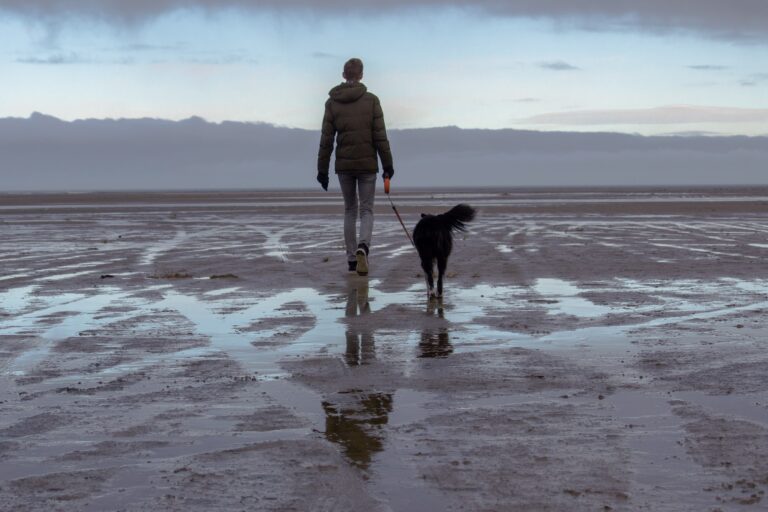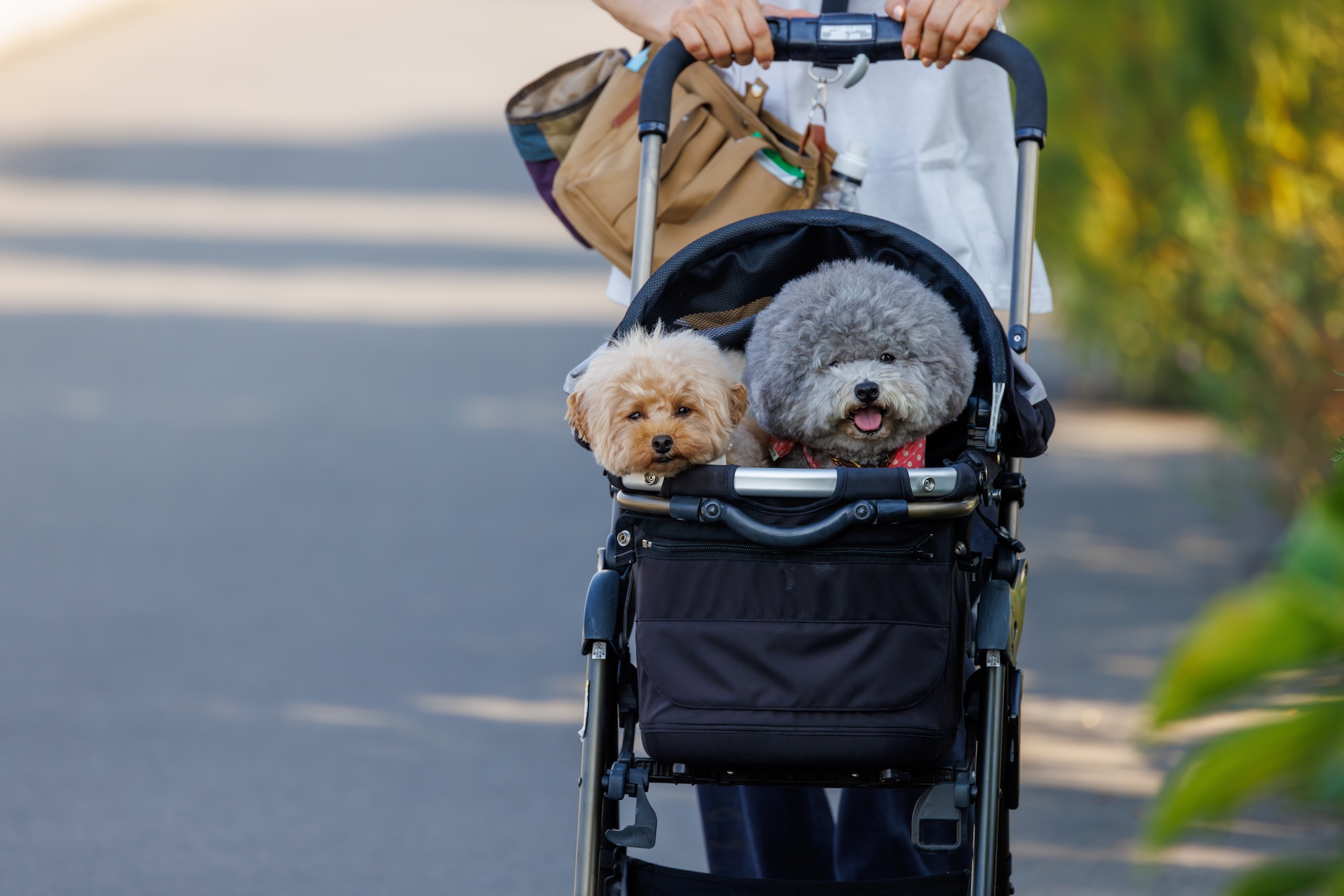There’s a lot that goes into the decision to welcome a dog into your life and your family, and there are endless opinions and options on the subject of raising your pup. But when it comes to finding your new family member, there’s one excellent starting place— an adoption site, or your local rescue organization or shelter. From the endless variety of adoptable pets available (over three million dogs enter shelters each year) to the life-changing reward of giving a second chance to a pup awaiting their forever home, there are tons of reasons to rescue your next pet.
“Adopting a shelter dog is one of the most rewarding things you can do,” says Zach Baker, director of animal shelter renovation program Rescue Rebuild and program director for GreaterGood.org.
While rescuing a dog might be a no-brainer, and right now more and more people are opting to adopt, it’s important to make sure that you consider the responsibilities of owning a dog and make sure that you’re in it for the long haul.
There’s a whole lot to know about finding the “right” dog, and starting off on the right foot when you bring them home. Here’s our guide to a successful adoption process, for you and your dog.
Finding your dog
So you’ve decided to welcome a canine family member into your home—what now? The prospect of finding the right dog for your family can seem daunting, but the good news is that shelters and rescues are full of passionate and caring staff members that will help ensure you’ve found the perfect match. They will be able to offer plenty of information about each animal in their care, from their unique personalities and the kind of lifestyle they’re best suited for, to whether or not they’re friendly with children and other dogs. “The shelter or rescue staff has had the opportunity to get to know each dog’s individual personalities and social cues,” Baker says. “You can rely on them to help you get to know the dogs that might be a good fit for your unique lifestyle—they’re truly the experts, since they spend all day with these animals.”
Here are some key things to consider when choosing your forever friend.
You can find your favorite breed (or, even better, your new favorite mix) in a shelter
It’s commonly assumed that shelters are for mutts only, and if you want a specific breed, you need to look elsewhere. Nothing could be further from the truth. If you do have your heart set on a particular breed, with some patience, you can almost certainly find it in a shelter. Some 25% of all shelter dogs are so-called “pure breeds,” and there are tons of breed-specific rescues who will not only have the dogs you’re looking for but also the expertise and advice on caring for that specific breed.
“There’s such a wide variety of animals in shelters, and they’re all worth checking out as you begin your search,” says Amy Nichols, vice president of companion animals for the Humane Society of the United States. If you’re specifically looking for, say, a Yorkshire Terrier, she says, your local shelters and rescues can almost always make it happen for you by connecting you with available animals through their network.
“Millions of pets enter animal shelters each year, and most of these animals are happy, healthy, and behaviorally sound—and, not to mention, there are tons of purebred shelter pets, which is a common misconception.” — Rebecca Smith, adoptions manager for the San Diego Humane Society.
“It’s so incredibly rewarding to adopt a dog and be a part of the ‘bigger picture’—knowing you helped save a life,” says Smith.
All that said, consider looking beyond the idea of a specific breed. Some of the most beautiful dogs you’ll see walking down any city street are mixes. Research has also shown that mutts may even be less prone to certain kinds of genetic health issues. You can often get the best of all worlds with a mixed breed. For example, if you’re looking for a Chihuahua, Tamie Parker, director of Texas Chihuahua Rescue recommends adopting a Chihuahua mixed breed. “These pets are a bit heartier,” she says. “They are still little, but tend to be more easygoing and have fewer health issues.”

Consider Your Lifestyle
More than breed, or looks, consider how a dog will fit your life (and how you will fit theirs) when thinking about adopting.
Take into account the following:
- Work obligations
- The size of your living space
- Your experience living with a dog
- Your appetite for walking, training, and possibly grooming
- The feelings (and allergies) of other members of your family
If you work long hours and find it hard to break away during the day, a puppy is probably not for you because of the amount of time and constant attention they demand. A high-energy breed like a Vizsla is likely not the right choice for someone who’s not interested in outdoor exercise.
Think about how you’ll want to spend time with your new friend—are you looking for a cuddly lap dog, or an athletic running or hiking buddy? Also be sure to educate yourself on any breed-specific personality traits or behaviors. Every dog is different, but there are some traits that commonly show up in certain breeds. Beagles, for example, are adorable, but they can be notoriously stubborn; Huskies are gorgeous, but they require a LOT of mental and physical stimulation or they can become difficult to live with.
“It’s helpful for adopters to have an idea of what they’re looking for prior to coming in—size, breed, and activity level are some of the most common factors,” says Smith. “The shelter staff can help potential adopters determine what type of dog is suitable for their home – especially if they have specific information on the dog’s behavior, previous home life, or medical needs.”
No matter what kind of dog you choose, though, it’s important to remember this: every dog needs exercise, training, and mental stimulation. Dog lovers may get a small breed dog, figuring that they’ll be happy being carried everywhere. But tiny dogs need just as much training as other dogs. And while some dogs will be happy with a few walks a day, many others need much more physical activity. If you can’t see yourself devoting a part of each day to these activities, you may wish to reassess or postpone your decision.
You could also look at the following options:
Fostering: While still a major commitment, fostering is by definition a limited engagement. But it’s one that will give you a very real sense of what’s involved in taking care of a dog. And who knows? Fostering is one activity in life where “failure” is actually a great thing. Read more about fostering here.
Senior adoption: You may also consider adopting a senior dog. While many older dogs still have a lot of pep in their step, they’re also more likely to be trained, and less likely to have the relentless go-go lifestyle of a puppy or young dog. Read more about why you should adopt a senior here.
Here’s a handy mental checklist for your pre-adoption process:
- Do you have enough time in your life and schedule—and are you just plain interested enough—to spend time walking with, and training your dog daily? Many dogs need at least one hour of exercise each day and no dog should be expected to spend long days alone in their crate.Think about early mornings, rainy days, and your travel schedule. If you can’t accommodate multiple walks a day, factor in what extra help you may need.
- Will your home accommodate a dog? That not only means can your physical space accommodate a dog and their crate (and the occasional mess), but, does everyone in your house want a dog, and will they all play a part in raising them?
- Will you be able to provide ongoing veterinary care, which can include not just annual checkups, vaccines, parasite prevention and treatment, but possibly emergency care?

Ask Questions…a Lot of Them
Since dogs can’t speak for themselves, come prepared with lots of questions for the shelter staff about everything from the dog’s history and personality to whether they’re house trained or have any unique medical needs or behavioral issues that will need to be addressed.
Be sure to ask lots of questions about the dog’s past and behaviors both inside and outside of the shelter to help get a better sense of whether he or she will be a good match for your family.
Don’t rush it
You’re probably anxious to bring home that new four-legged member of your family, but finding the right pet can take some time. Again, even if you have a very specific dog in mind, with some patience, you can likely find the perfect pup in a shelter somewhere in the U.S.
You might have to spend some time visiting various shelters (IRL or online), and even consider out-of-town or out-of-state options if necessary—shelters in some parts of the country (typically in southern states) are overflowing, while others may not have as many dogs at any given time.
Don’t judge by first impressions
When you finally meet your potential adoptee, keep in mind that many dogs in a shelter environment may appear shy or nervous, but that’s not necessarily their true personality. “A shelter is a scary place for a dog, so many will not show well in a kennel,” says Baker. More than anything, he stresses that it’s crucial to take the time to learn about the unique personalities of each animal you spend time with throughout your search—every dog is an individual, and judging a dog by its looks or breed alone or from their behavior during a brief encounter with your family won’t be an accurate way to determine if the dog is a good match.
“Shelters bring out extremes in dogs, and so it’s difficult to judge them based on that first meeting—if a dog is cowering in the corner, it doesn’t mean they don’t like you, they are probably just scared. I’ve seen some incredible turnarounds and transformations once the dogs arrive at their new home.” —Amy Nichols
Bringing your dog home
Setting yourself (and your dog) up for success is going to require some supplies, and the right mindset.
While stocking up on the essentials like food and treats is important, you’ll also need plenty of patience and compassion for your new furry friend, who is transitioning into a completely new environment with humans that he or she may not know very well. You’ll also need some human help. Here’s how to prepare.
Supplies and services
Before you welcome your new pet home, have all of the necessary supplies ready to avoid having to run around during your pet’s first few days in their new home (you’ll have plenty of other things to think about). Think: a collar, harness, and leash, good food, bowls, poop bags, a crate and bedding, and several toys and balls (see the full checklist below). Don’t forget to have a new dog-tag ready to go with your pup’s name and your family’s contact information.
Although many shelters take care of the first year of vaccines, spay/neuter, and microchipping as part of the adoption fee, you will also want to have a veterinarian lined up for your dog’s check-ups as well as any questions you may have during their first few weeks at home. If you live in the same area as your dog’s shelter, you might use a vet that they use or recommend. Otherwise, ask friends and family to refer you to their veterinarian, or do some research on other local options. Most shelters also offer a wide variety of resources to assist adopters after taking their new pet home, such as behavior support and a complimentary veterinary exam, Smith says.
Other key resources to line up:
Look into a local certified trainer. Even if your dog seems like they know the basics, it’s a great idea to consult with a trainer on how to build a great ongoing relationship.
Look for the closest 24-hour veterinary hospital. Don’t wait until you’re facing an actual emergency.
Dog-proof your digs
If you’re an experienced dog owner, you know the drill. If not, look for anything in your home or garden that’s harmful that might be accessible to your dog. Think about: electrical wires, cleaners and chemicals that aren’t locked away, children’s toys that could be swallowed, and plants that might be nibbled (read more about what plants are safe and which are dangerous here). Make sure your own food is kept out of reach (read about what foods are toxic to dogs here).

Ease Into it
Try to keep in mind that most dogs will need an adjustment or decompression period as they settle into their new digs. In those first days, experts advise being as calm and relaxed as possible (which may require a one-on-one chat with your kids before the dog arrives), as well as limiting visitors—your friends and family are going to be anxious to play with a new family pet, but now is not the time to host meet-and-greets with the neighborhood because this may only heighten the anxiety for your pooch.
Start the relationship the way you want it to continue
Establish boundaries and rules right away. Let your new pup sniff around your house, but don’t let them do anything and everything they want. It might not be easy—when you bring home a dog who’s had a rough time, you want to give them everything. But you, your dog, and your relationship will be better in the long-run if you establish boundaries and a respectful dynamic. Every situation is different, but a good starting place is to keep your recently adopted dog off your bed and furniture (at least at first), ensure they wait politely for food, and discourage jumping up on you or others. As trainer Blake Rodriguez puts it, “the first thing is to shoot for respect over comfort. A lot of the time, we get too soft. When you’re looking at comfort it can send the wrong message. I want to teach my dog to be respectful and with respect good things come.”
Make a plan for day-to-day routines
Bringing a dog home can be so exciting that it might be easy to lose sight of the day-today stuff—how they’ll live in your home every day, where they’ll sleep, what you’ll actually do with them on any given day. Think through some of these logistics like:
Where will they sleep?
Will they be confined to one part of your house, or will they be allowed everywhere?
When will you feed and walk them? Will anyone be helping?
After a day or two of decompression, establish a routine of feeding, walks, and sleep.
It’s a good idea to have a crate in place that can act as your dog’s home base. It’s an essential tool for training, and will give your dog a place to go and unwind. The crate should be located somewhere that’s not in the way, but not too isolated. When your dog first comes home, they should be in the crate whenever you’re not directly supervising them. It can be unsafe to allow your dog to roam freely in your home, and a free-roaming dog can quickly develop undesirable habits ( if they jump up on your bed, say, and you aren’t there to correct it, well, they just learned that they can jump on your bed). The crate should be a place that they love and feel safe, so make sure to never use it as punishment. Read more about crate training here.
Give Them Time to Adapt
This is one of the most important things to keep in mind to give both of you the best chance of making the adoption stick. The first few days (or even weeks) might not be smooth sailing. Every dog reacts to being in a shelter differently, but it’s a stressful situation for just about every dog. Your foster dog may be jumpy when you bring them home, or they may be shy, and reticent about interacting. They may whine, or pace, or have accidents, or they may just sleep and sleep. “Your dog is coming from a shelter, where there’s a different routine and set of rules,” Nichols says, noting that it typically takes about a month for a dog to fully relax and start to adapt to new routines.” Experienced adopters will often tell you that they didn’t really see their dog’s true personality emerge until they were home for a few weeks, or even longer. Try and maintain routines and training for this early period and it’s likely your dog will settle in beautifully.
Invest in training
Not only will your pup need some time to relax, but they’ll also need consistent training to learn the rules of your home. Consider consulting a certified dog trainer–they can help your dog not only learn basics like sit and stay, potty training and crate training, they can help you establish the fundamentals of a healthy, respectful relationship. Those fundamentals can be more important to a long, happy life together than teaching “shake a paw.” A good trainer can also help address any behavioral issues that might crop up, from barking out the window to jumping on guests when they arrive. A training class can also be a good socialization opportunity, depending on the dog.
It’s not always easy, but once you develop a trusting bond, your relationship will grow, and adopting will be one of the best decisions you ever made.
Adoption checklist: what to buy
Food! The shelter will alert you to any specific health issues your dog may have. If you’re responsible for food, a subscription service that delivers fresh food to your door will eliminate one thing to wrangle. Healthy, fresh food can also help with a range of issues your dog may have, from stomach ailments to allergies, and even mood.
Food and water bowls: Some seasoned fosters, and health and behavior experts, recommend slow-feeding bowls, which can reduce the speed at which a dog gulps down food, providing some mental stimulation, and helping prevent gas!
Treats: Tasty treats will be a huge help when training (and it’s also nice to give your pup the occasional extra). But be careful with handing out unhealthy, highly processed, calorie-dense treats (treats should make up no more than 10% of your dog’s daily calorie intake). If you’re buying treats from the pet store, look for single- or limited-ingredient varieties. Or look right in your fridge or pantry! Many dogs will appreciate fresh fruit like small bits of apple, or even small pieces of vegetables like green beans.
A collar and leash: The shelter may provide you with a collar, or advice on which kind of collar to use with your dog. If not, many adoption sources recommend a correctly sized martingale collar. If you’re working with a trainer, they will also recommend the right collar for your specific needs.
A crate: A properly sized crate is essential. It will give your dog a place to go in your home, and to help with house training, if necessary. A crate should be big enough for your dog to stand up, lie down, and turn around in, but not big enough that there’s extra room they might use to go potty.
Bedding: It doesn’t have to be fancy, but be sure to provide your dog a soft place to lie down and a place to sleep. Ask the shelter about any specific requirements (for example, dogs who struggle with joint pain, or a senior dog, may require more padding in their bedding).
Toys: Keep them simple and safe, like hard rubber Kongs. Do not give your dog hooves, rawhide, or cooked bones.
A baby gate: If your dog has issues with stairs, or you want to limit their range in your home while training, a baby gate can be a helpful addition.
Enzymatic cleaner: It’s important to thoroughly clean up any accidents that happen in your house so your dog isn’t tempted to revisit the same spot next time.
Dog shampoo: Be sure to buy a gentle, vet-approved shampoo; the pH levels of your own brand may not be right for your dog.
And don’t forget poop bags!




